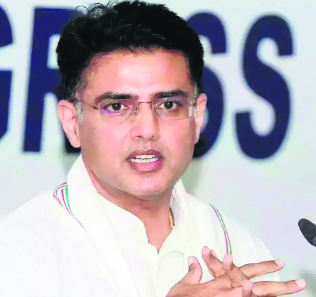In a surprising turn of events in the recent Rajasthan elections, the Bharatiya Janata Party (BJP) has secured a comfortable victory, leaving the Congress party reeling from internal conflicts and community discontent. The Sachin Pilot factor, a prominent Gujjar leader, emerged as a crucial element that may have significantly contributed to the Congress’s electoral setback.
Reports indicate that the Gujjar community, a substantial voting bloc in eastern Rajasthan, expressed dissatisfaction over Sachin Pilot being denied the Chief Minister post despite the Congress’s win in 2018. The community, influential in around 12 seats in the region, appeared to have shifted allegiance, impacting the electoral outcomes.
Sachin Pilot, who had led a rebellion in 2020 against the Ashok Gehlot government, became a focal point of internal strife within the Congress. The rebellion, which nearly toppled the government, left a lasting impact on the party’s image, creating a perception of instability and disunity among voters. Efforts to show party unity in the run-up to the elections, including interventions by the central leadership, were deemed too late to erase the already established perception of a divided Congress.
The Gujjar community’s discontent, combined with the internal conflicts, manifested in the electoral results. In eastern Rajasthan, traditionally a stronghold for the Congress, the BJP made significant gains, winning 38 out of 59 Assembly seats across 11 districts. This marked a substantial increase of at least 20 seats compared to the 2018 elections. In contrast, the Congress managed to secure only 19 seats in the same region.
The impact of the Sachin Pilot factor extended beyond eastern Rajasthan. Western Rajasthan, including districts like Jaisalmer, Bikaner, and Barmer, witnessed a notable shift toward the BJP, overturning the Congress’s previous dominance in these areas.
The Congress’s failure to address anti-incumbency sentiments and replace dissatisfactory sitting MLAs further compounded its woes. Despite internal surveys indicating dissatisfaction with around 50 sitting MLAs, the party replaced fewer than 20, highlighting a gap between party leadership and public sentiment.




















